Carbohydrate counting
Food is made up of protein, fat, and carbohydrate (carb). When carbs are digested, they get broken down into glucose, which makes blood glucose levels go up. Carb counting is adding up the grams of carbs you want to eat, so that you can give the right amount of insulin for the food you eat.

Why count carbs?
If you are carb counting for diabetes, you may be doing so for two reasons:
- Match your insulin to the food you want to eat
- Better manage glucose levels to avoid highs and lows

Your healthcare professional will help you figure out your insulin dose based on how many carbs you are eating.
Carb counting tools
One of the most important parts of carb counting is knowing how much of a certain food you are eating. You can use:
Nutrition labels
Most packaged foods are required to provide a nutrition facts label which lists calories and nutrients. Understanding how to read nutrition labels is important when looking for the total carbohydrate count per serving.
If you are eating out, check out their website, or ask for their menu nutrition facts when you arrive. More and more restaurants are publicly providing this information.
Measuring cups and spoons
Measuring cups, spoons, and a food scale are helpful tools for practice. Measuring helps give you a good visual idea of how different serving sizes look like on a plate, bowl, or glass which helps you to better estimate when you are not at home.

Your hands
Your hands can also help you estimate portion sizes, especially when you are away from home. A cupped hand measures approximately ½ cup and a fist is approximately 1 cup.
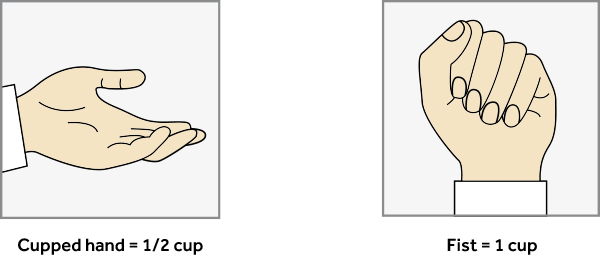
Carb counting apps and websites
Keep a food journal of foods and meals you normally eat, and their carb counts per serving for a quick reference. This can be a notebook or a calorie counter app like MyFitnessPal or a website like CalorieKing. Over time, you’ll get a better sense of how many carbs are in certain foods you eat, and how they affect your blood glucose levels.
Other resources
Visual carb estimation guide
Additional information can be found in the LOOP blog or the American Diabetes Association.
Methods for carb counting*
There are different ways to count carbohydrates. You may use one or a combination of the different methods.
Estimating carbohydrates – 15-gram servings
Estimating carbs is based on serving sizes that have about 15 grams of carbohydrate. This method can be helpful when you are, for example, eating at a restaurant and no food labels or nutrition information is available. Here are food groups and serving sizes that contain approximately 15 grams of carbs:
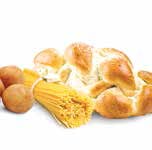
Starches
- 1 slice of bread
- 6 crackers
- 6” tortilla
- 3/4 cup cereal
- 1/3 cup rice or pasta
- 1/4 bagel
- 1/2 cup starchy vegetables, like corn, peas, beans, lentils
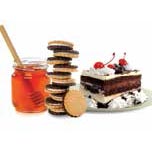
Sweets, desserts, and other carbohydrates
- 2” square of unfrosted cake
- 1/2 cup ice cream or pudding
- 1 tbsp honey, syrup, or jelly
- 2 small cookies

Milk and yogurt
- 1 cup milk (skim, low-fat, or whole)
- 6-8 oz of light yogurt
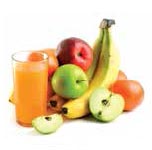
Fruits and fruit juices
- 1/2 cup juice
- 1 tennis ball-sized 1/2 banana, apple, or orange
- 1/2 banana
Carb meal size
Your healthcare professional may ask you to guess how many grams of carbs you are eating based on your meal’s carb size. When you examine your meal sizes and their carb content, you may be able to come close to knowing how many grams of carbs you are eating by guessing your “carb meal size.” For example, a healthcare professional may help one person figure out that a typical small carb snack might be about 15 grams of carbs.
A small carb meal might be 30 grams of carbs, a medium carb meal might be 60 grams of carbs, and a large carb meal might be about 90 grams of carbs. Another person, for example, might have different carb meal sizes, where small is 30 grams of carbs, medium is 45 grams of carbs and large is 60 grams of carbs.
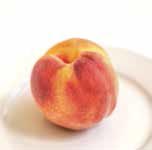
(1 small piece of fruit)

(2/3 cup rice + 1 cup lettuce)
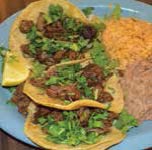
(3 small tortillas, ½ cup beans, 1/3 cup rice)
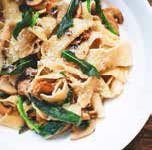
(2 cups of pasta)
Whatever your method of estimating carbs is, work with your healthcare professional to pick the one that works for you and makes managing your glucose levels easier.
Protein and fat
Carbohydrates impact glucose levels the most, but protein and fat (especially in large quantities) can affect glucose levels too. Foods that contain mostly protein and fat: eggs, meat, seafood, cheese, oils, and nuts.
Protein
For meals that are high in protein, and have little to no carbs, such as scrambled eggs, they may find they need insulin based on the amount of protein in their meal. For this group of people, the Chief Medical Officer at Medtronic suggests counting grams of protein, dividing grams of protein in half, then taking insulin per their carb ratio for half the protein grams.
Note: When bolusing for protein and fat, check glucose levels more often to see what works best. Be sure to discuss this with your healthcare professional.
Fat
Foods that are high in fat like cheese or meat, or 100% fat like oils, may impact glucose levels in two ways. Some people become more resistant to insulin when consuming foods high in fat, and therefore they require additional insulin. Fat also slows down digestion, which affects glucose levels. So, the carbohydrates eaten along with the fat move into the bloodstream more slowly. For a person eating food with a high amount of fat and carbohydrates, for example a quesadilla, pizza, or fast food, they may need to spread out their insulin over time.
Looking for more tips? Join the list
Subscribe to our newsletter, News to Infuse, and receive monthly diabetes tips and helpful information.
* The Basics - Diabetes, Insulin pump therapy & Carb counting - MiniMed™ 670G System